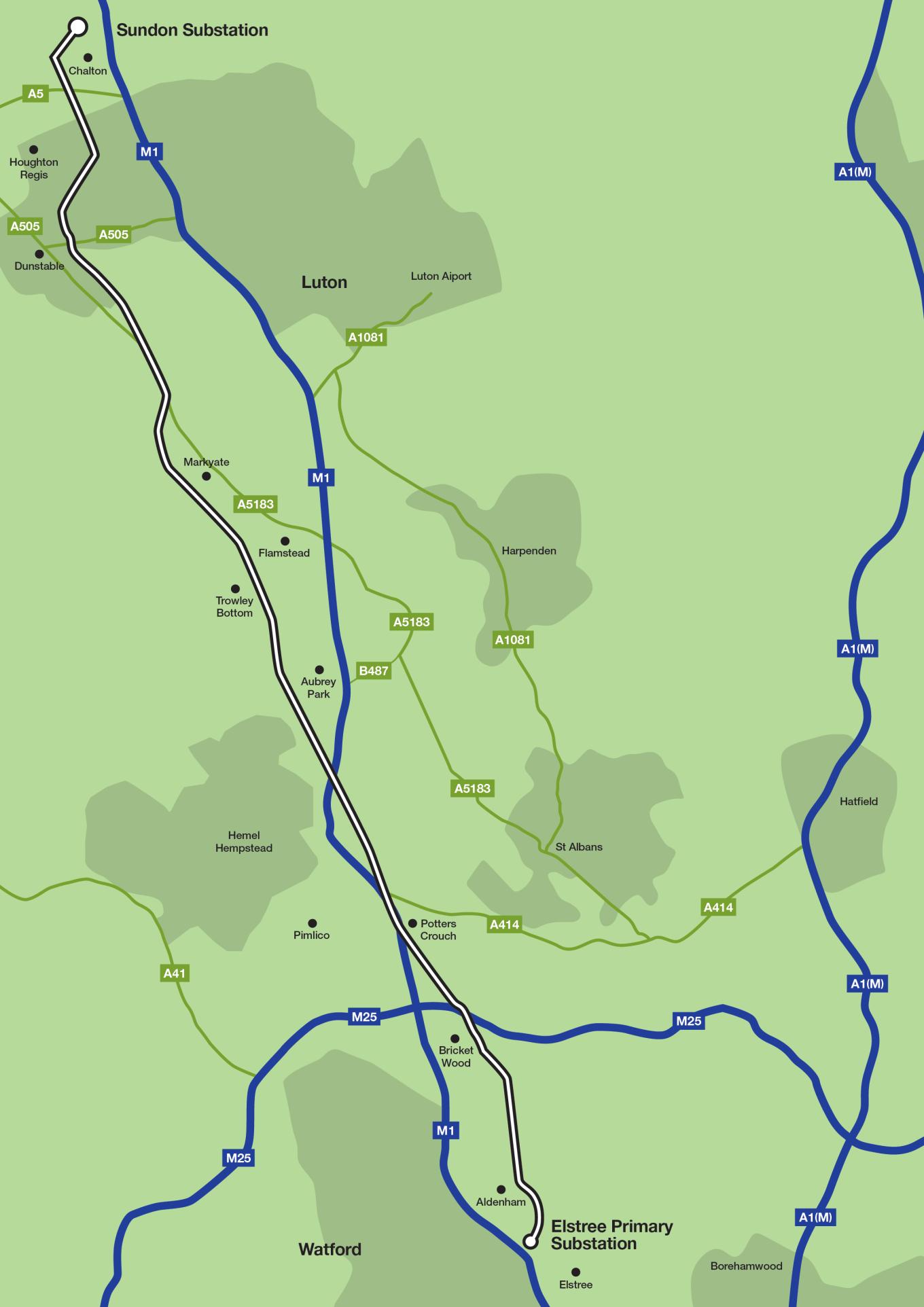Latest Update (January 2025)
We have now finished refurbishing the existing 400kv overhead electricity line that runs between our Elstree and Sundon substations. Our work will help ensure the long-term energy security for southern England on both the high-voltage electricity transmission network, and the local distribution network supplying homes and businesses.
The Elstree to Sundon refurbishment project increased capacity and enabled more clean energy projects in South England to be connected onto the UK electricity network.
The line runs south from Chalton, through Dunstable, past Hemel Hempstead and enters Elstree Substation to the east of Watford.
Our programme to upgrade the line included preparation activity, followed by the main works to replace the wires and other equipment along the 35km route.
This work forms part of the crucial programme of overhead line refurbishment across the UK. The components on overhead lines are designed to last up to 60 years. However, we programme refurbishments before that time so that the work isn’t so costly and extensive.

Frequently Asked Questions
Whilst our refurbishment activity has now concluded, you can still view some FAQs below.
To ensure our work can happen as safely and efficiently as possible, we will be carrying out a number of activities in advance of the main works, which we describe as enabling works.
This will include:
- Vegetation clearance and tree lopping
- Widening road entrances at narrow access points
- Installing scaffolding and trackways in fields
National Grid work with a number of contract partners to deliver their crucial works. The enabling and main works for this project are being led by Morgan Sindall, a construction and engineering company with a track record of delivering complex project for National Grid.
We need to clear some vegetation from around the base of some pylons and underneath overhead electricity lines so that our contractors can have safe access to work sites.
National Grid is committed to ensuring as little impact on local wildlife and the environment as possible. We will work with an ecologist when we remove the vegetation to ensure the clearance is kept to a minimum.
Before beginning any project, we carry out an environmental assessment of any areas that may be affected by our work. This includes consulting with a wide range of local environmental groups and landowners to ensure that where possible, we avoid any potential impact on the environment or disruption to wildlife.
To prepare for our main works, in some places we will need to widen access roads (also known as bell mouth widening) to ensure equipment can access the overhead electricity line safely and efficiently. Carrying out this work in advance of the main pylon refurbishment will ensure we keep disruption to a minimum.
We may also need to install some temporary trackways in fields to access to the overhead electricity line.
We may need to install some scaffolding in advance of the main refurbishment works beginning in June. Installing scaffolding allows us to minimise disruption to roads and businesses underneath the overhead electricity line.
We do not anticipate any road closures during the preparation stage of our project, which will take place from April to June 2024.
When the main works begin in June 2024, we may at times need to temporarily close some roads or install some temporary traffic management measures near our works. We’ll be back in contact with more details before we begin the main works.
Access will be maintained to all properties along the route during the works. If we anticipate that the work is likely to cause any disruption near your property, we will contact you in advance with more information.
Our overhead line crosses some Public Rights of Way (PRoW) and Permissive Rights of Way. So we will need temporary footpath closures and/or diversions for the safety of members of the public as we work overhead. Where we can, we will look to keep local communities informed in advance and we’ll do all we can to minimise any disruption as we do our work.